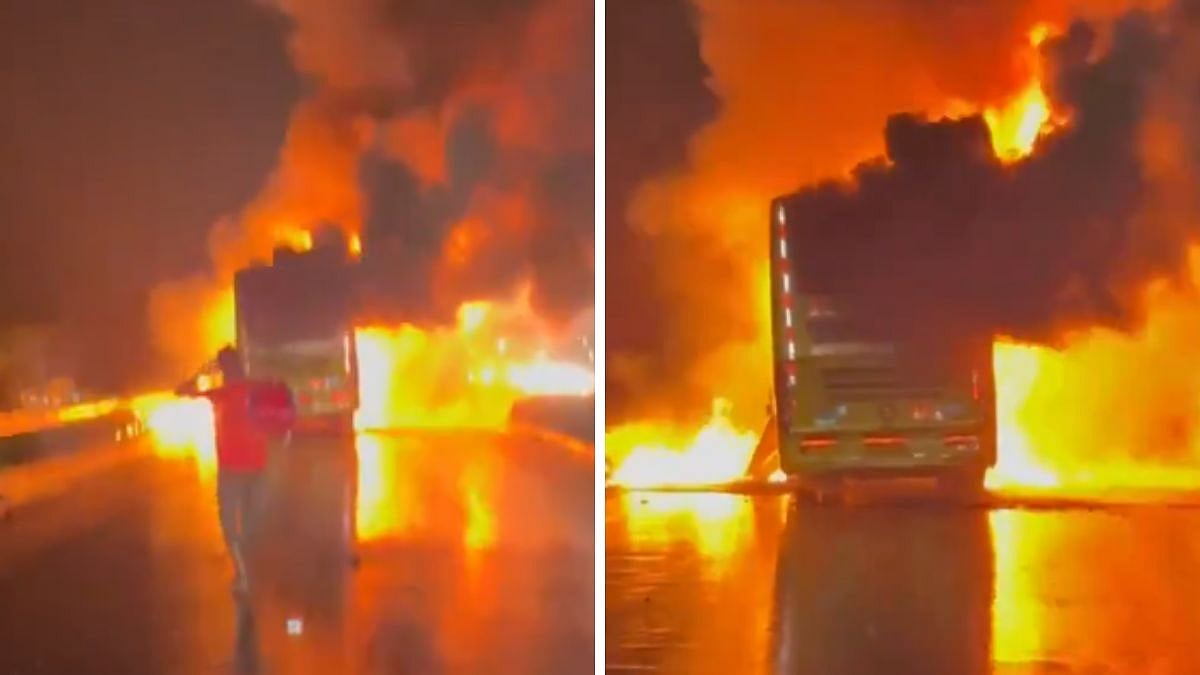The fiery bus crash on a highway in Andhra Pradesh that killed at least 20 people might have been less deadly if it had seats instead of sleeper berths, from which passengers found it difficult to escape. What happened in Kurnool mirrors recent tragedies in Jaisalmer, where a sleeper bus fire killed 25 people, and in Buldhana, Maharashtra, in 2023, where another crash claimed 25 lives. The pattern points to a growing crisis: poorly designed buses are being allowed to operate on highways at high speeds, putting thousands of lives at risk.
Unlike cars of standard design that are crash-tested by specialised agencies, sleeper buses—often built by third-party body manufacturers—frequently fail to meet even the weak norms prescribed under the Automotive Industry Standards (AIS) of the Union Ministry of Road Transport and Highways. Travellers using these buses often find themselves in cramped spaces with little headroom, narrow aisles, hard-to-locate emergency exits, and fire hazards such as curtains and upholstery materials.
It is not difficult to imagine how a rapidly spreading blaze, fuelled by inflammable materials used in bus construction, can trap victims with no chance of escape. The upper decks of the coaches are allowed to have two passenger berths on one side, and a third on the other, with a similar arrangement on the lower deck, making movement extremely difficult. The recent spate of crashes should serve as a wake-up call for the Union government and State transport departments. Violations by bus operators—such as unauthorised body modifications to increase berth capacity or height, and the absence of the mandatory four accessible emergency exits—must be strictly identified and penalised.
Passenger bus services between cities are well developed in the European Union, the United States, and the United Kingdom, but none of these jurisdictions permits sleeper berths because of the risks they pose in crashes. The few exceptions involve heavily modified coaches built to stringent safety standards, akin to first-class transforming seats in aircraft—an impractical proposition in India due to costs.
Worse, many sleeper buses still in operation predate AIS regulations, yet state governments continue to permit their use with little concern for passenger safety. The Central Institute of Road Transport in Pune claims to have the expertise to test buses for crashworthiness—an ability that must now be deployed to certify every passenger coach in use.
For the thousands of existing buses, setting sensible speed limits, enforcing driver shift durations and time schedules, and permitting predominantly daytime operations could help reduce accidents. Enforcing compulsory accident insurance of ₹25 lakh per passenger, underwritten by the operator, would also encourage safer practices. In the long term, transitioning from sleeper coaches to regular seated buses would be a far more sustainable and safety-oriented solution.









